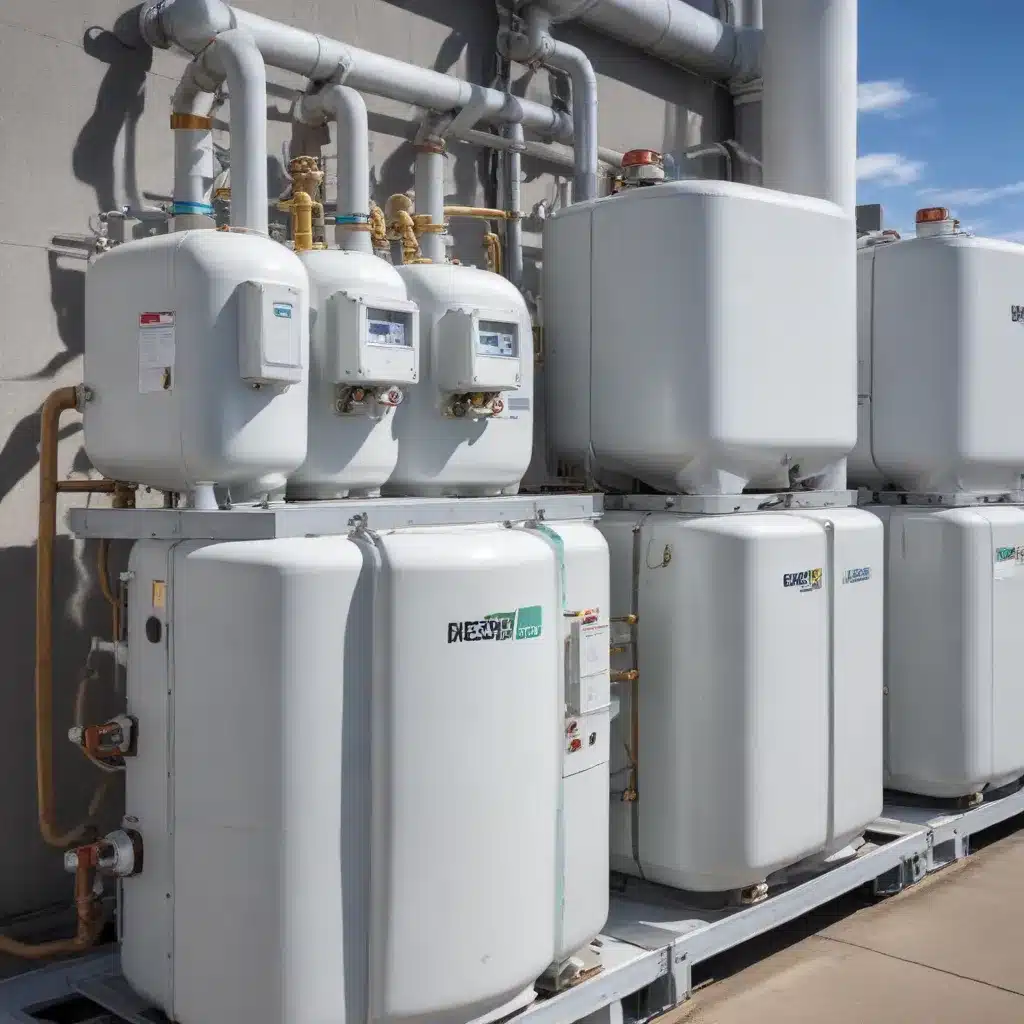
As an HVAC and refrigerant specialist at Airgas Refrigerants, I understand the complexities and importance of maintaining compliance with evolving refrigerant regulations. The regulatory landscape surrounding refrigerants is continuously shifting, driven by global environmental concerns and a push for more sustainable practices. This comprehensive guide aims to equip facility managers, HVAC contractors, and environmental compliance officers with the knowledge and strategies to ensure their operations remain compliant and environmentally responsible.
Regulatory Landscape of Refrigerants
Refrigerant Regulations and Standards
At the forefront of refrigerant regulations is the U.S. Environmental Protection Agency (EPA), which oversees the implementation of the Clean Air Act and the subsequent American Innovation and Manufacturing (AIM) Act. The AIM Act mandates an 85% phasedown in the production and consumption of hydrofluorocarbons (HFCs) – a potent class of greenhouse gases commonly used in refrigeration and air conditioning systems – by the year 2036.
In addition to the federal regulations, individual states have also introduced their own sets of guidelines. For instance, the California Air Resources Board (CARB) has implemented stringent refrigerant management programs to monitor the use, emissions, and handling of refrigerants within the state. These state-level regulations often have their own unique reporting requirements, leak detection standards, and incentives for adopting low-global warming potential (GWP) alternatives.
Compliance Monitoring and Enforcement
Compliance with refrigerant regulations is closely monitored and enforced by regulatory bodies. The EPA and state agencies utilize a range of mechanisms, including on-site inspections, record audits, and administrative penalties, to ensure that businesses adhere to the established guidelines. Non-compliance can result in hefty fines and reputational damage, underscoring the importance of proactive management.
Emerging Regulatory Trends
As the world continues to grapple with the environmental impact of refrigerants, regulatory agencies are constantly evolving their policies. Some emerging trends include further reductions in allowable GWP thresholds, stricter reporting requirements, and the promotion of reclaimed refrigerant usage. Facility managers and HVAC contractors must stay vigilant and adaptable to navigate these changing landscapes effectively.
Environmental Impact of Refrigerants
Greenhouse Gas Emissions
Refrigerants, particularly HFCs, are potent greenhouse gases that contribute significantly to global warming when released into the atmosphere. The AIM Act and other regulations aim to address this issue by incentivizing the transition to low-GWP alternatives and promoting responsible refrigerant management practices.
Ozone Depletion Potential
In addition to their global warming impact, certain refrigerants can also deplete the Earth’s protective ozone layer, leading to increased UV radiation exposure and associated health risks. Regulatory bodies have been proactive in phasing out ozone-depleting substances in favor of more environmentally friendly options.
Energy Efficiency Considerations
The energy efficiency of HVAC and refrigeration systems plays a crucial role in their environmental impact. Regulations often encourage the use of refrigerants that can improve system performance and reduce energy consumption, further minimizing the carbon footprint of these operations.
Refrigerant Handling and Management
Proper Refrigerant Recovery and Recycling
Responsible refrigerant recovery and recycling practices are essential to compliance and environmental stewardship. Regulations mandate the proper handling and disposal of refrigerants, including the use of certified technicians and specialized equipment for recovery, reclamation, and recycling.
Technician Training and Certification
Compliance with refrigerant regulations requires a well-trained and certified workforce. Technicians must undergo specialized training to handle, service, and maintain HVAC and refrigeration systems in accordance with EPA and state-level guidelines. Maintaining up-to-date records of technician certifications is crucial for demonstrating compliance.
Record-keeping and Reporting Requirements
Comprehensive record-keeping and reporting are fundamental to ensuring regulatory compliance. Businesses must meticulously document their refrigerant usage, leak events, repairs, and disposal activities to satisfy the stringent reporting requirements set forth by regulatory bodies. Automated cylinder management systems and compliance software can streamline these processes and reduce the administrative burden.
Refrigerant Alternatives and Substitutes
Low-GWP Refrigerant Options
As the industry moves away from high-GWP refrigerants, a wide range of low-GWP alternatives have emerged. These include hydrofluoroolefins (HFOs), natural refrigerants (such as ammonia, carbon dioxide, and hydrocarbons), and innovative blends that offer improved environmental performance and energy efficiency. Selecting the right refrigerant for a specific application requires careful evaluation of factors like system compatibility, safety, and long-term sustainability.
Hydrofluoroolefins (HFOs) and Blends
Hydrofluoroolefins (HFOs) have gained significant traction as a viable replacement for high-GWP HFCs. These unsaturated fluorocarbons offer low GWP and ozone depletion potential, making them an attractive option for compliance with evolving regulations. HFO-based refrigerant blends are also being developed to optimize performance and further reduce environmental impact.
Natural Refrigerants and Their Applications
Natural refrigerants, such as ammonia, carbon dioxide, and hydrocarbons, are gaining popularity due to their low environmental impact and energy-efficient properties. These alternatives are well-suited for various applications, from commercial refrigeration to industrial cooling systems, and are often incentivized by regulatory bodies.
Facility Compliance Strategies
Inventory Management and Tracking
Maintaining a comprehensive understanding of a facility’s refrigerant inventory is crucial for compliance. Utilizing cylinder management systems and pressure-temperature chart analysis can help track refrigerant usage, identify potential leaks, and ensure timely replenishment or reclamation.
Leak Detection and Repair Programs
Proactive leak detection and repair (LDAR) programs are essential for minimizing refrigerant emissions and maintaining compliance. Strategies may include the deployment of automated leak detection technologies, regular inspections, and the implementation of robust repair protocols to address leaks in a timely manner.
Contingency Planning and Emergency Response
Having a well-defined contingency plan for addressing emergency situations, such as refrigerant spills or uncontrolled releases, is crucial for compliance and environmental protection. This includes the establishment of clear protocols, the availability of trained personnel, and the accessibility of necessary equipment and resources to mitigate the impact of such events.
By understanding the evolving regulatory landscape, the environmental impact of refrigerants, and the best practices for responsible refrigerant management, facilities can position themselves for long-term compliance and sustainability. Airgas Refrigerants is committed to providing the expertise, products, and solutions to support your efforts in this crucial endeavor. For more information, please visit https://www.airgasrefrigerants.com.

